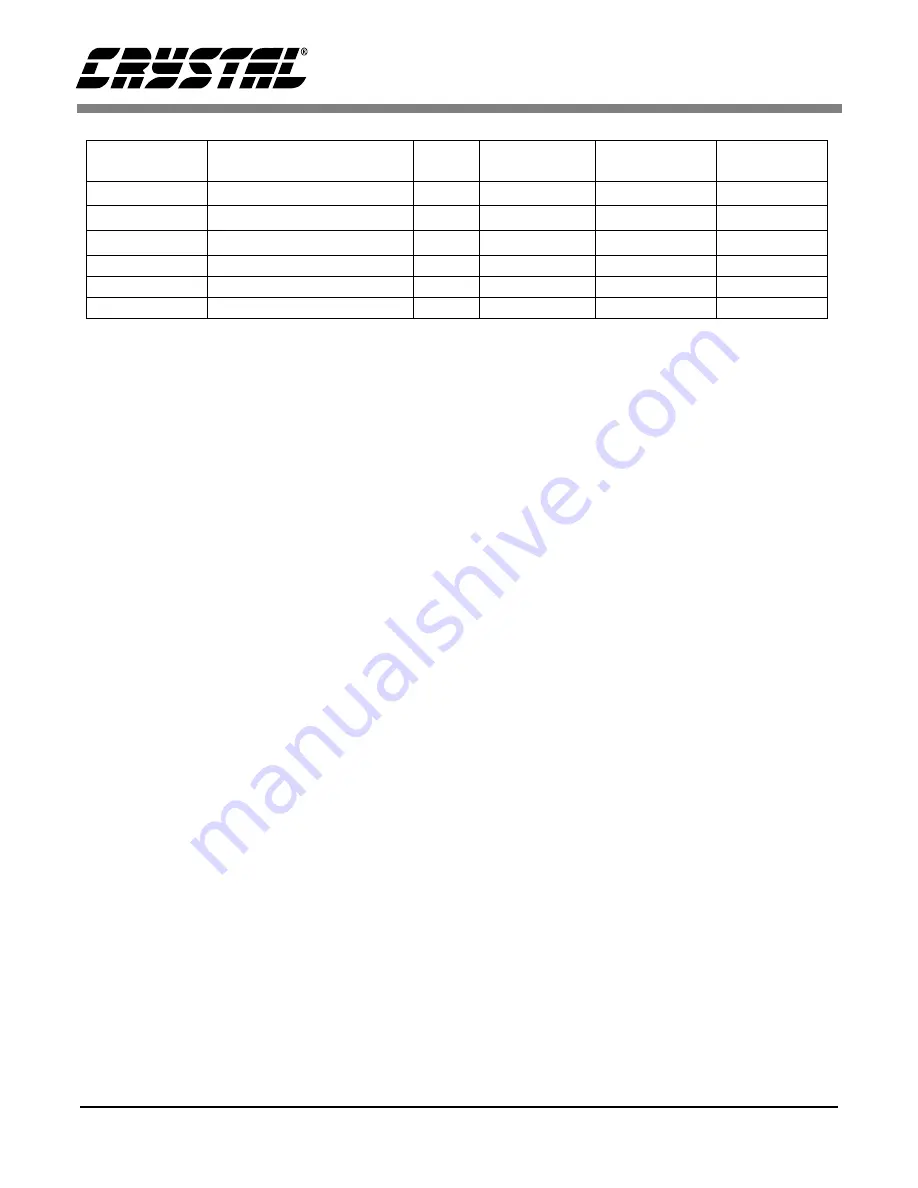
CS5521 CS5523
DS317PP2
23
differential output voltage of the amplifier must not
exceed 2.8 V. The equation
ABS(VIN + VOS) x 20 = 2.8 V
defines the differential output limit, where
VIN = (AIN+) - (AIN-)
is the differential input voltage and VOS is the ab-
solute maximum offset voltage for the instrumenta-
tion amplifier (VOS will not exceed 40 mV). If the
differential output voltage from the amplifier ex-
ceeds 2.8 V, the amplifier may saturate, which will
cause a measurement error.
The input voltage into the modulator must not
cause the modulator to exceed a low of 20 percent
or a high of 80 percent 1’s density. The nominal full
scale input span of the modulator (from 30 percent
to 70 percent 1’s density) is determined by the
VREF voltage divided by the Gain Factor. See Ta-
ble 6 to determine if the CS5521/23 are being used
properly. For example, in the 55 mV range, to de-
termine the nominal input voltage to the modulator,
divide VREF (2.5 V) by the Gain Factor (2.2727).
When a smaller voltage reference is used, the re-
sulting code widths are smaller causing the con-
verter output codes to exhibit more changing codes
for a fixed amount of noise. Table 6 is based upon
a VREF = 2.5 V. For other values of VREF, the val-
ues in Table 6 must be scaled accordingly.
Figures 8 and 9 illustrate the input models for the
AIN and VREF pins. The dynamic input current for
each of the pins can be determined from the models
shown and is dependent upon the setting of the
CFS1 and CFS0 (Chop Frequency Select) bits. The
effective input impedance for the AIN+ and AIN-
pins remains constant for the three low level mea-
surement ranges (25 mV, 55 mV, and 100 mV).
The input current is lowest with the CFS bits
cleared to logic 0s.
Note: Residual noise appears in the converter’s baseband for
output word rates greater than 61.6 Hz if the CFS bits are
logic 0. To eliminate the residual noise for word rates of 61.6
Hz and lower, 256 Hz chopping is recommended, and for 84.5
Hz and 101.1 Hz filters, 4096 Hz chopping is recommended.
Note that C=48pF is for input current modeling only. For
physical input capacitance see ‘Input Capacitance’ specifica-
tion under ‘Analog Characteristics’ on page 3.
Charge Pump Drive
The CPD (Charge Pump Drive) pin of the converter
can be used with external components (shown in
Figure 1) to develop an appropriate negative bias
voltage for the NBV pin. When CPD is used to gen-
erate the NBV, the NBV voltage is regulated with
an internal regulator loop referenced to VA+.
Therefore, any change on VA+ results in a propor-
Note:
1. The converter’s actual input range, the delta-sigma’s nominal full scale input, and the delta-sigma’s
maximum full scale input all scale directly with the value of the voltage reference. The values in the
table assume a 2.5 V VREF voltage.
2. The 2.8 V limit at the output of the 20X amplifier is the differential output voltage.
Input Range
(1)
Max. Differential Output
20X Amplifier
VREF
Gain Factor
∆
-
Σ
Nominal
Differential Input
∆
-
Σ
Max. Input
±
25 mV
2.8 V
2.5V
5
±
0.5 V
±
0.75 V
±
55 mV
2.8 V
2.5V
2.272727...
±
1.1 V
±
1.65 V
±
100 mV
2.8 V
2.5V
1.25
±
2.0 V
±
3.0 V
±
1.0 V
-
2.5V
2.5
±
1.0 V
±
1.5 V
±
2.5 V
-
2.5V
1.0
±
2.5 V
±
5.0 V
±
5.0 V
-
2.5V
0.5
±
5.0 V
0V, VA+
Table 6. Relationship between Full Scale Input, Gain Factors, and Internal Analog Signal Limitations
















































